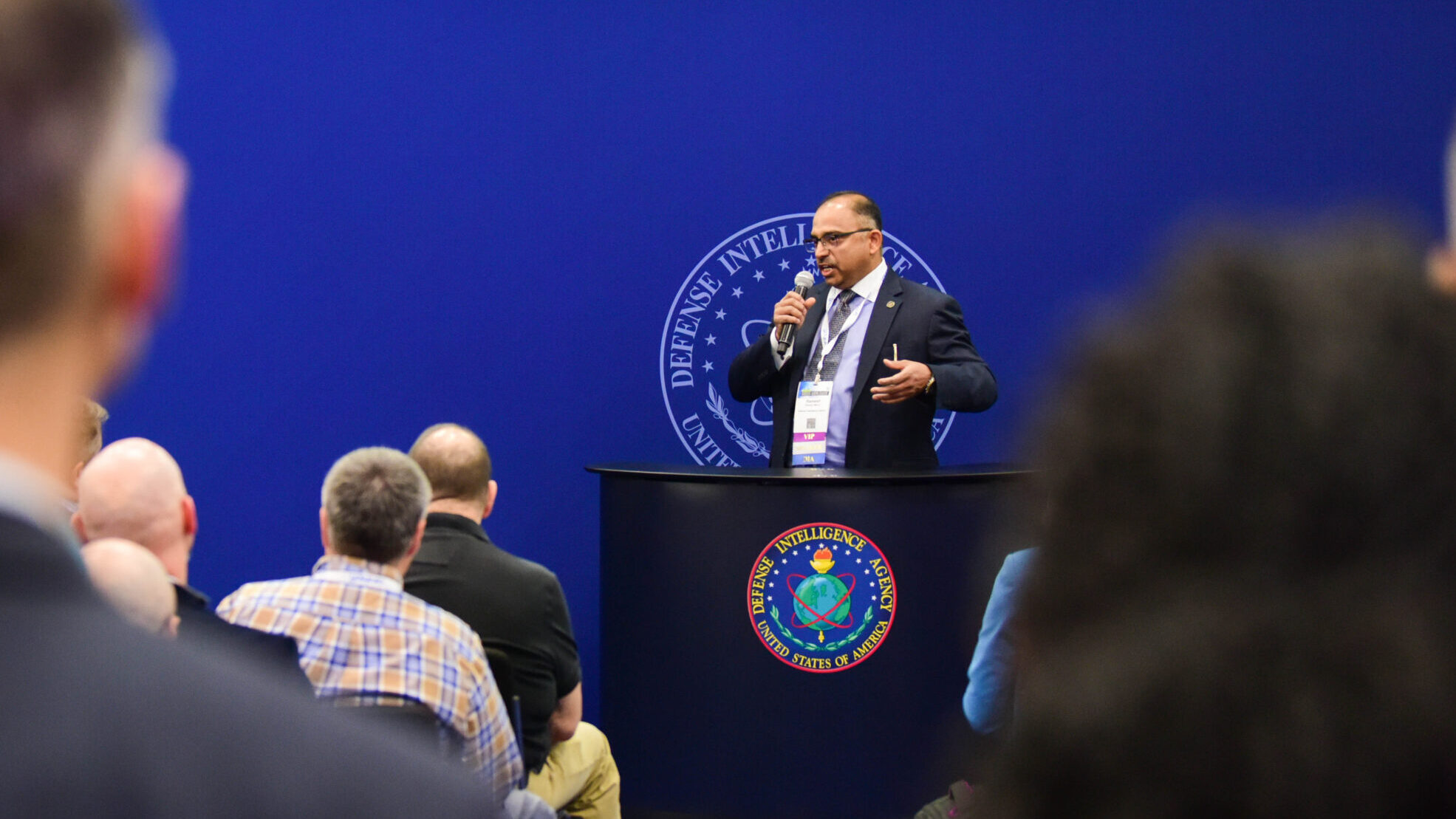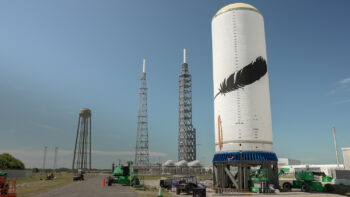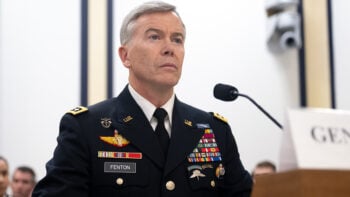
DIA Chief Technology Officer Ramesh Menon speaks at the DoDIIS conference. (Photo by Petty Officer 2nd Class Wade Costin.)
DoDIIS 2023 — The Defense Intelligence Agency recently signed out “truly well-defined holistic” artificial intelligence strategy and is working to establish a centralized governance model meant to serve as a guide on the development and standardization of the technology, according to an agency official.
“We are in a very interesting era and we want to make sure that we are complying with the [Department of Defense] ethical AI principles,” Ramesh Menon, DIA chief technology officer, told reporters today at the DoD Intelligence Information System, or DoDIIS, conference. “I actually had the opportunity to be in the first [intelligence community] chief AI officers meeting last week at [the Office of the Director of National Intelligence], and we are adopting a maturity framework so we can measure every agency on the same scale across different pillars. … Our job at this point is to operationalize AI.”
RELATED: NSA chief announces new AI Security Center, ‘focal point’ for AI use by government, defense industry
Menon said the strategy was signed out last week by DIA Director Gen. Scott Berrier, and one of the approaches outlined in the strategy calls for the creation of an AI community of interest, which will serve as a centralized governance model across the defense intelligence enterprise, he added. DIA is currently working to put the finishing touches on the model and more details are expected to be released publicly next year, he said.
DIA also worked with other Intelligence Community agencies to identify gaps that can be addressed through the strategy, though Menon did not elaborate on which gaps were identified or when the strategy is expected to be released publicly.
“So what we have done is we have a strategy, we have roadmaps for each functions of the department … and when we look at the long-term capabilities, we map that to the pillars of our strategy,” Menon said. “Talent and skills: Where is the big gap? What should we do to upskill our people? Platforms: What are the gaps? … So we are trying to find a way to standardize the operationalization of new capabilities.”
The agency’s AI strategy comes after DoD released its own strategy in November to accelerate the adoption of AI capabilities. That strategy accounted for industry advancements in federated environments, decentralized data management and generative AI tools like large language models.
DoD’s strategy itself came after the White House issued an executive order on AI that the Biden administration hailed as one of the “most significant actions ever taken by any government to advance the field of AI safety” in order to “ensure that America leads the way” in managing risks posed by AI. The executive order also directed DoD to establish a pilot program to identify how AI can find vulnerabilities in critical software and networks and develop plans to attract more AI talent within the department.
DIA’s Information Strategy
DIA’s Chief Information Officer Doug Cossa this week also revealed his office’s strategy outlining priorities from 2024 to 2028. The strategy outlined five focus areas Cossa discussed on Tuesday at the conference, including modernizing the Joint Worldwide Intelligence Communication System, or JWICS, the government’s network for hosting top secret and sensitive compartmented information.
Kathryn Lipps, chief of DIA’s JWICS program management office, told reporters today the agency wants to implement zero trust principles into JWICS and increasing security on its architecture, although she did not elaborate on details because they “are not releasable.”
“But the security elements we’re looking at putting in place give us overall better visibility of what’s happening in the architecture,” Lipps said. “These security pieces that we’re baking into the future architecture … allow us to see kind of anomalous or abnormal behavior in the architecture and cut that piece off or go and self-remediate that architecture.”
RELATED: Zero trust is breaking things at the DIA, and ‘that’s good,’ CIO says
Other priorities in the DIA CIO’s 2024 to 2028 strategy include modernizing its shared desktop environment, improving its information technology workforce, increasing international connectivity and creating a pipeline to deliver software-enabled capabilities.





















